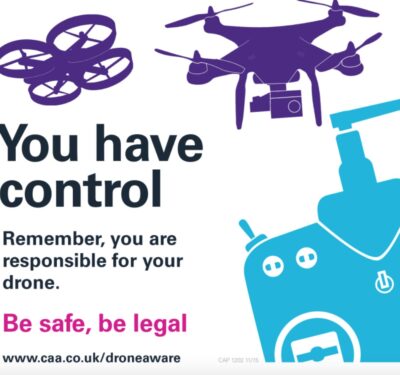
Height Tec
Insect-borne diseases pose some of the biggest health challenges worldwide. These kinds of illnesses, called vector-borne diseases, account for 17 percent of all infectious disease and kill 1 million people every year, according to the World Health Organization. More than 2.5 billion people in more than 100 countries are at risk of contracting dengue fever alone.
Dengue and a host of other ailments—including malaria, sleeping sickness, chikungunya, West Nile, and zika—are transmitted by mosquitoes.
“When it comes to human tragedy, no creature comes close to the devastation caused by the mosquito,” wrote Bill Gates and British politician George Osborne in January in a joint article in The London Times.
But fighting mosquitoes and other insects is not easy. Malaria-carrying mosquitoes are becoming resistant to insecticides. The Aedes aegypti mosquito, the carrier of dengue, yellow fever, chikungunya and zika, can breed in as little as a teaspoon of water. They bite during the day, so mosquito bed nets do little good and they’re highly adapted to living indoors—right near their food sources.
To help stem the spread of vector-borne diseases, researchers have turned to increasingly complex solutions, some being made more practical by new tools including Unmanned Aircraft Systems (UAS), which can be used to target the insects that spread them. By going where humans can’t—and doing it faster and more cheaply may finally give humanity fighting chance against these illnesses.
Sterile Bugs
One approach gaining traction in the scientific community is reducing the size of bug colonies by introducing sterile males. Females mate with the sterile males and fail to produce offspring, thus shrinking the size of the next generation.
One major problem with this approach? It’s expensive and difficult.
At least two companies are attempting to solve this problem by creating sterile insect delivery drones. Height Tech, a German company, and Embention, a Spanish company, both presented their solutions at the Drones for Good competition in Dubai in January 2016. Height Tech developed a quadcopter able to deliver sterile mosquitoes, and Embention was working on a fixed-wing platform for transporting sterile tsetse flies.
Their approach offers many advantages including quicker, wider distribution.
The scientists developing the sterile mosquitoes “are using gamma rays in the laboratory, but the distribution [method] is they are putting mosquitoes in Coca-cola cans,” said Marius Schroeder, on the Height Tech team. “It’s stone-age technology.”

Kimberly Fornace
This approach is complicated by the fact that, at least in Africa, mosquito males “are not very mobile.” Manually distributing sterile male mosquitoes could take up to a day just to cover one square kilometer, Schroeder said.
The females, which bite humans, cover a much broader range, traveling up to a few kilometers to go from inaccessible-to-humans breeding grounds to human settlements, where they spread the malaria parasite.
Height Tech modified an octocopter it had already built to create a custom mosquito distribution device. The drone can carry 25 containers, each the size of a film canister. Inside each container are 1,000 male mosquitoes, chilled to 45 degrees Fahrenheit, a temperature that puts the mosquitoes into temporary hibernation.
“You can stuff them together without harming each other,” Schroeder said.
Height Tech demonstrated its system at Drones for Good (just barely missing a chance to advance to the finals) with biodegradable paper confetti standing in place for mosquitoes. “If the [mosquito] project doesn’t make it, we’ll call it Partycopter,” Schroeder joked.
Height Tech is hoping to build a larger device, if it can raise half a million Euros in funding, that would carry 250 mosquito containers—enough to blanket a square kilometer in sterile males in just 45 minutes of flight.
Also at Drones for Good, Spanish company Embention showed off its fixed-wing tsetse fly delivery service. Tsetse flies are the primary carrier of sleeping sickness, which is not as deadly as malaria but painful and can lead to permanent neurological damage. A variant of sleeping sickness that kills cattle is considered a major cause of poverty in sub-Saharan Africa.
Javier Espuch Abad, business developer for Embention, said previous efforts to control tsetse flies involved piloting a manned aircraft through treacherous terrain and manually deciding when to drop the flies, which Espuch Abad compared to “launch[ing] boxes through the window.”

Dee Ann Divis
With a drone, the drop sites can be preprogrammed to be evenly spaced, he said.
Embention’s fully autonomous platform is heading to Ethiopia for more testing.
Any mosquito-borne illness could theoretically be reduced by the introduction of sterile mosquitoes so if either of these delivery mechanisms can be commercialized, they could certainly be used to treat more than one disease. Just last month, the International Atomic Energy Agency said it would ship a mosquito irradiator to Brazil in the hopes of preventing zika in advance of the 2016 Olympic Games. It’s possible these sterile mosquitoes would be released from drones—but more likely the government will use the older, more expensive method of manual distribution.
Catching Mosquitoes
While mosquitoes are vectors of disease, not every mosquito can carry every disease—and not every mosquito is a carrier.
Project Premonition, an experiment that has received support from Microsoft Research, aims to learn more about where disease-carrying mosquitoes are traveling, to track known epidemics and predict new outbreaks.
Announced last year, the project includes a custom-built mosquito trap, moved from place to place by drone, which would capture mosquitoes and sample their blood for diseases. By knowing what diseases were found in an area, and how they were spreading, public health researchers would be able to better prepare people for their impact.
Douglas Norris, a professor at the Johns Hopkins Bloomberg School of Public Health who is involved with the project, said manually trapping mosquitoes is labor intensive and this new system could save researchers hours of work. Norris said he hopes to have a new version of the custom trap to experiment with this spring.
“We’re trying to accelerate our timeline to be more responsive to things like dengue and zika,” he said.
Tracking Monkeys
It may seem counterintuitive to study macaque monkeys if the goal is to combat mosquito-borne illnesses, but that’s exactly what a team of researchers is doing in Malaysia, using off-the-shelf UAS to map changing areas.
That’s because the macaques are carriers of a special kind of malaria that can be transmitted from monkeys to humans through mosquitoes. (Normally, humans only get human malaria and monkeys only get monkey malaria.)
In Malaysia, it’s thought that this Plasmodium knowlesi malaria strain, which is steadily on the rise, was transferred to humans when they went into the forests to work and came in contact with infected monkeys and mosquitoes. But researchers noticed that people were getting infected even when they didn’t enter the forests.
So Kimberly Fornace of the London School of Hygiene and Tropical Medicine decided to see how land use patterns might have changed monkey or mosquito behavior. She started by building a map.
Satellite imagery didn’t work because the areas she was studying had too much cloud cover—and because Fornace wanted to monitor how clear-cutting was affecting malaria in real-time, not a few months down the road.
Fornace deployed a senseFly eBee drone, a fixed-wing platform that launches by being thrown into the air. It flew more than 100 flights to photograph and map the area.
Sure enough, after analyzing the information, Fornace found a link between deforestation and malaria cases.
But there’s more work to be done.
“We are hoping to understand more about…how these clearings affect macaque movement and behavior or where people are likely to come in contact with mosquitos,” Fornace wrote in an email.
To help with that research, Fornace’s team has deployed another eBee, this time with an infrared camera to identify macaques and estimate their population numbers. And after testing 10,000 people in her study area for malaria, she’s using the drone to “develop more detailed land classifications and risk maps for P. knowlesi in different environments.”






